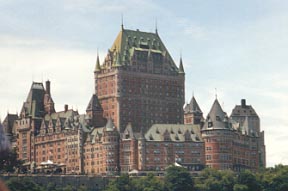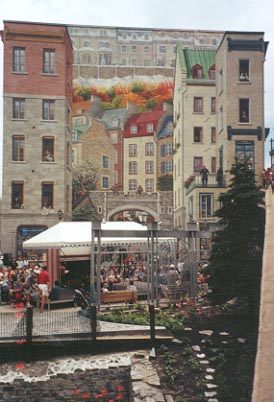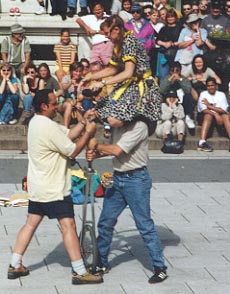

By
Don and Linda Freedman
Search
TheTravelzine
TheTravelzine Group
Access Your Mail
Don's
Gallery
Packing
Hints
Planning
Tips
Cities
Links
Links
LINKS TO OUR TRAVELOGUES
Argentina, Buenos Aires - Jan-Mar 2010
Argentina, Buenos Aires - Jan-Mar 2009
Argentina, Buenos Aires - Jan-Mar 2008
Austria - Fall 2005
Belgium, Brussels - Fall 2000
Canada - Summer 2002
Canada - Summer 2001
Canada - Summer 2000
Czech Republic - Spring 2000
France - Fall 2002
France, Paris - Fall 2000
France, Paris - Spring 1999
France, Lyon - Spring 1999
Germany, Berlin - Fall 2009
Germany - Fall 2002
Germany - Spring 2000
Germany - Fall 1999
Greece - Fall 2012
Greece - Fall 1999
Greece - Fall 1997
Hungary - Spring 2000
Israel - Fall 1999
Italy - Winter 2007
Italy - Winter 2006
Italy - Winter 2005
Italy - Winter 2004
Italy - Winter 2003
Italy - Winter 2001
Italy - Fall 1998
Italy - Fall 1996
Netherlands - Spring 2000
Portugal, Azores - 2019
Portugal, Azores - 2018
Portugal, Sao Miguel & Lisbon - 2017
Portugal, Azores - 2017
Portugal, Azores - 2016
Portugal, Azores - 2015
Portugal, Azores - 2014
Portugal, Azores - 2013
Portugal, Azores - 2012
Portugal, Azores - 2011
Portugal, Lisbon - 2011
Portugal - Fall 2006
Portugal - Fall 2004
Portugal - Fall 2003
Portugal - Fall 2001
Portugal - Spring 1999
Portugal - Spring 1997
Slovakia - Spring 2000
Slovenia - Spring 1999
Slovenia - Fall 1996
Spain, Barcelona - Winter 2006
Switzerland - Fall 2002
Switzerland - Spring 2000
Switzerland - Spring 1999
Switzerland - Fall 1998
Switzerland - Fall 1997
Switzerland - Spring 1996
U.S. Florida, Key West - Fall 2006
U.S. Florida - Spring 2001
U.S. Maine - Summer 2002
U.S. Massachusetts - Summer 2003
U.S. Massachusetts - Summer 2002
U.S. Massachusetts - Summer 2001
U.S. New York State - Fall 2005
U.S. New York State - Summer 2004
U.S. New York State - Summer 2003
U.S. New York State - Summer 2001
U.S. Washington,DC - Spring 2000
CANADA Summer 2000 (2)
QUEBEC CITY (1)
It's about 250 kilometers (150 miles) from Montreal to Quebec City. We took highway #20 that runs on the south side of the Saint-Laurent River. Linda and I have lived in Canada for about thirty years and are sorry to say this was our first visit to this marvelous city, a visit we had been looking forward to for a long time.
The name Quebec (Kebec) comes from the Algonquin language and means where the river narrows. For many years Quebec City was considered to be the gateway to the continent. In 1690 the Comte de Frontenac repelled the English forces and fortified the city. In 1759, the English took the city in the battle of the Plains of Abraham and France ceded the colony to England. The Americans failed to take the city in 1775, which ended the military action in the region. The English completed the fortifications, which today make Quebec unique as the only walled city north of Mexico. UNESCO has declared the city, with its historic district, a world heritage site. Only one other city in North America has that distinction. Quebec City became the capital of the Province of Quebec in 1867 at the time of confederation.
After crossing the river and arriving at the upper town, we took Grande Allee and passed from the newer city to the newer/older city and finally entered Vieux Quebec through Port Sainte-Louis onto rue Saint-Louis then went straight ahead to Le Chateau Frontenac, our home for the next three days. As we drove along Grand Allee we were impressed by the huge, green expanse of the Plains of Abraham, Parliament Hill and our first sightings of the glorious towers, dormers and steep copper roofs of Le Chateau. As we passed through the beautifully preserved old walls onto rue Saint-Louis we were transported to another time, one that we are accustomed to seeing in our travels through Europe.
 It is easy to see
why Le Chateau Frontenac is the graphic symbol for Quebec
City. Fashioned as a majestic, medieval fortress and
perched on a cliff overlooking the river, it is an
imposing sight to behold. The Scottish brick lightened by
the rich, gray Lachevrotiere stone of its foundation
walls, turrets and cornices complements the beauty of the
asymmetrical design.
It is easy to see
why Le Chateau Frontenac is the graphic symbol for Quebec
City. Fashioned as a majestic, medieval fortress and
perched on a cliff overlooking the river, it is an
imposing sight to behold. The Scottish brick lightened by
the rich, gray Lachevrotiere stone of its foundation
walls, turrets and cornices complements the beauty of the
asymmetrical design.
The first wing, called the Riverview, was inaugurated on December 20, 1893. Over the years, many expansions lead to the creation of the hotel as it is today with 605 rooms and an 18-story central tower. The Citadelle wing was built in 1899, the Mont-Carmel wing in 1908 and the Saint-Louis wing and the Tour Centrale in 1920 and 1924 respectively. The Claude-Pratte wing offers guests a wonderful indoor pool, fitness center and gorgeous outdoor terrace. The history of this hotel is integrated with the history of Quebec and Canada and is worth reading when you have the good fortune to visit.
We were particularly awestruck by the impact of the entrance hall and it came as no surprise to discover it has been recognized as one of the most wonderful in North America. The next thing that impressed us was the quality of service at reception. The young women were not only well groomed and cheerful, but exceptionally committed to welcoming us and were ready to take whatever time and energy required to satisfy our needs. We found the same exceptional attitude at the concierge station and with the chambermaids. We came to find out that this does not happen by accident. The hotel runs a program called colleague for a day, where a member of the hotel management participates, observes, listens and learns about the functioning and constraints of a job which differs from his or her own.
As you
might imagine, the 605 rooms come in a wide variety of
shapes and sizes and all come with whatever amenities you
might desire. Paula and Warren had an extremely open
large area serving as their bedroom and living area along
with a round dining table in a turret that adjoined the
room; on the 16th floor, with windows all around, they
had terrific views of the city. Ours was on the 4th floor
overlooking the green park at the front and consisted of
a huge living room with steps leading through French
doors to the very small, by comparison, bedroom. ![]()
The old town, within the fortifications, is comprised of an upper and lower town connected for easy access by stairways and a funicular. The hotel, in the upper town, is the heart of the old town. When you walk out the front door of the hotel you begin an excursion through the narrow streets lined with delightful renovated and restored buildings that have maintained their historic character while integrating some newer design features. We found this to be consistent throughout the old city; the old with some new touches blended beautifully. The city has mandated that all restoration and new construction must meet specific design standards and all plans must be submitted for approval.
Behind the hotel is a wide pedestrian walkway named Dufferin Terrace that leads to Promenade des Gouverneurs, the Citadelle and the Battlefields Park, known as the Plains of Abraham. The views from Dufferin Terrace of the Saint-Laurent River, Petit-Champlain (lower town quarter) and the old port are breathtaking. The Citadel of Quebec along with the walls is the largest fortification still in use in North America. We were just in time to see the changing of the guard inside the walls of the fort.
Battlefields Park is a place of history, nature, leisure and culture. At the Discovery Pavilion, 835 Wilfrid-Laurier Avenue, a worthwhile multimedia show on the great historical battles and the creation of the park is shown in the Interpretation Center (in the vault of Quebec's old prison). The park is a huge gorgeous expanse, wonderful for all outdoor activities. If you want some fun physical activity, you can visit the fort, walk atop the city walls and finish with a trip through the park at your own pace. Next trip!
Just outside the walls on Grande Allee, the Parliament building sits majestically with its eloquent architecture offering a history of Quebec. The front of the building is decorated with 22 bronze statues in tribute to the women and men who are an integral part of the history of the province. Just past the Parliament, going west on Grande Allee, are a few blocks lined with cafes and restaurants, housed in old stone buildings and newer restorations with sidewalk patio seating, jam-packed at all times. The whole scene is deliciously inviting.
Next to
the hotel is Place d'Armes, where the funicular and
stairway to the lower town are located. The glass-enclosed
funicular offered great views as we quickly descended
into the Petit-Champlain Quarter, the oldest commercial
district in North America. This quaint area is a jewel.  On one side a shop-lined
stairway and on the other side and straight ahead
pedestrian streets filled with cozy cafes, restaurants,
charming boutiques and everywhere we strolled one
stunning building after the other. We noticed that there
were ladders on many of the roofs and learned that
historically fires had been prevalent and the ladders
were there to aid in extinguishing the fires in the smoke
stacks. Masons are taught how the stonework was done in
earlier times so that the renovated buildings retain
their old look. This city takes its heritage so seriously
that one might say that no stone is left unturned.
On one side a shop-lined
stairway and on the other side and straight ahead
pedestrian streets filled with cozy cafes, restaurants,
charming boutiques and everywhere we strolled one
stunning building after the other. We noticed that there
were ladders on many of the roofs and learned that
historically fires had been prevalent and the ladders
were there to aid in extinguishing the fires in the smoke
stacks. Masons are taught how the stonework was done in
earlier times so that the renovated buildings retain
their old look. This city takes its heritage so seriously
that one might say that no stone is left unturned.
As we
continued our journey, we fell in love with this enclave
of times past and its position on the bank of the river.
Each street (rue) and alleyway has a distinct character
and we had to leave plenty for next time. 
In the Place Royale, we were awestruck by a huge 3-D mural painted on the Maison Soumande. It is 420 square meters and features many important people in Quebec's history and highlights of the city's architecture. Linda could not stop clicking away.
Rounding out our adoration of the old/new world charm was the excitement of the Quebec City Summer Festival. The whole city was one gigantic open-air stage, with 800 performers from over 20 countries on 15 indoor and outdoor stages within easy walking distance of each other. This place was rocking with every kind of music you could dream of plus the best street performers making it an incredibly entertaining extravaganza.
![]() to Montreal
to Montreal
Search TheTravelzine | TheTravelzine Group | Don's Gallery
Packing Hints | Planning
Tips | Cities
Links
All pages on TheTravelzine.comęCopyright 1996-2020 Don & Linda Freedman